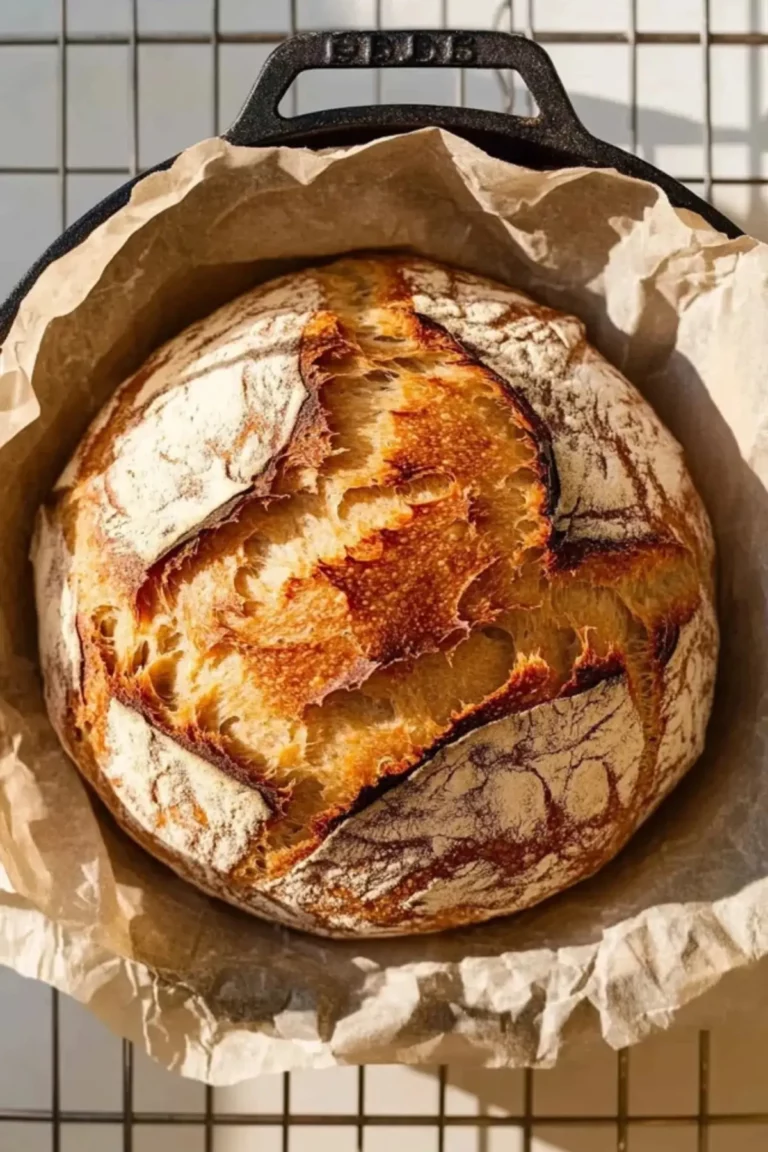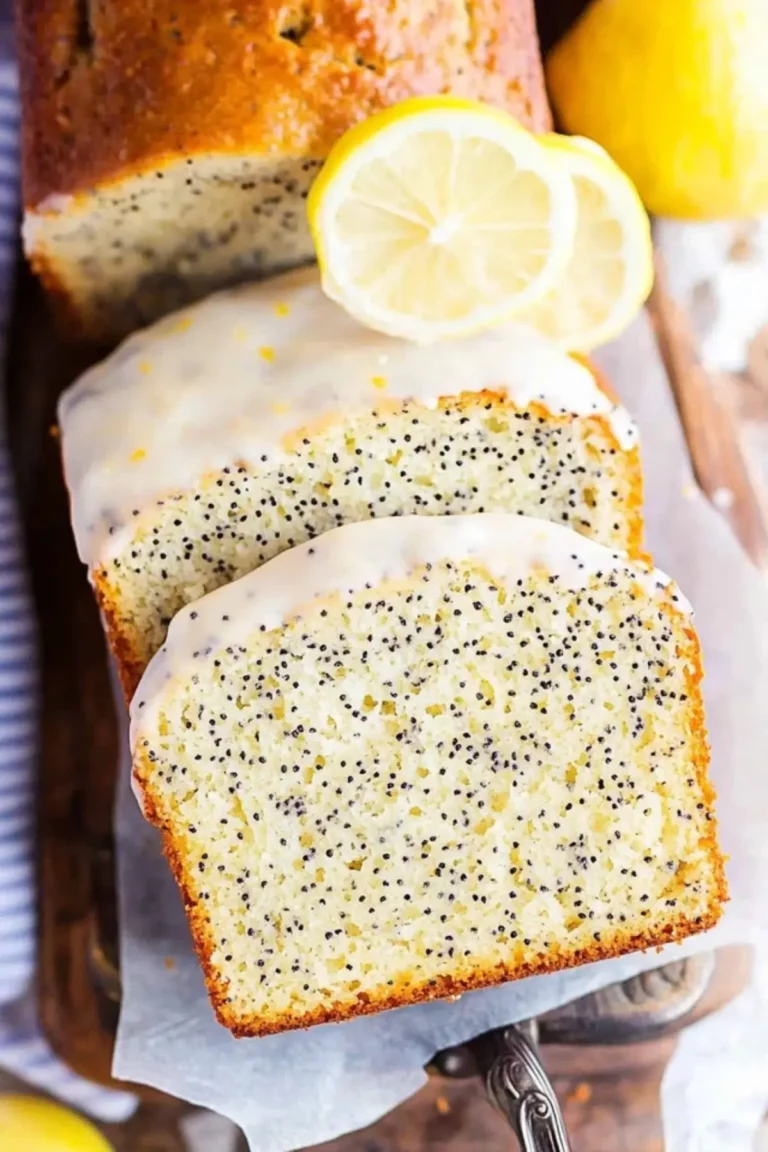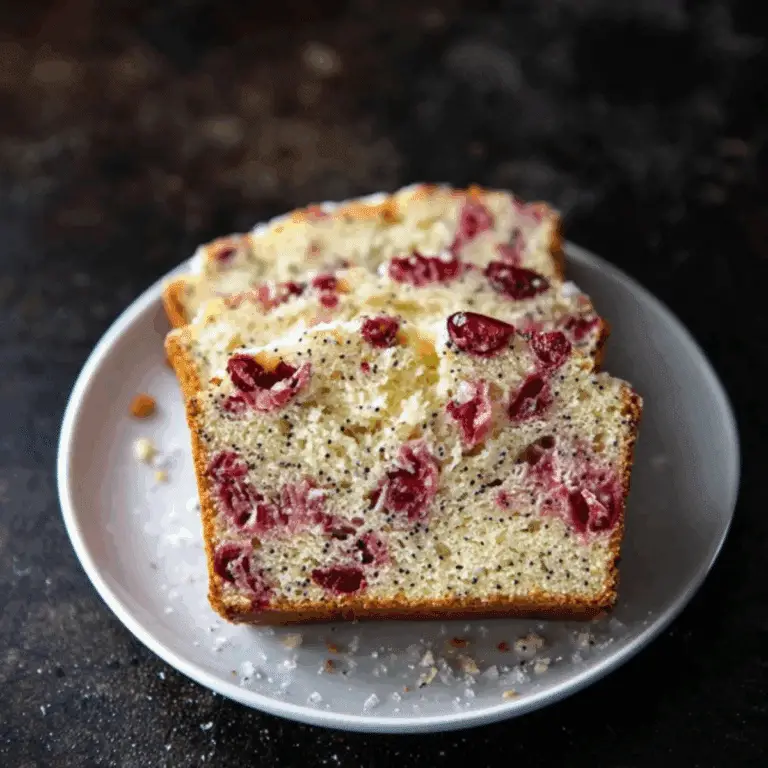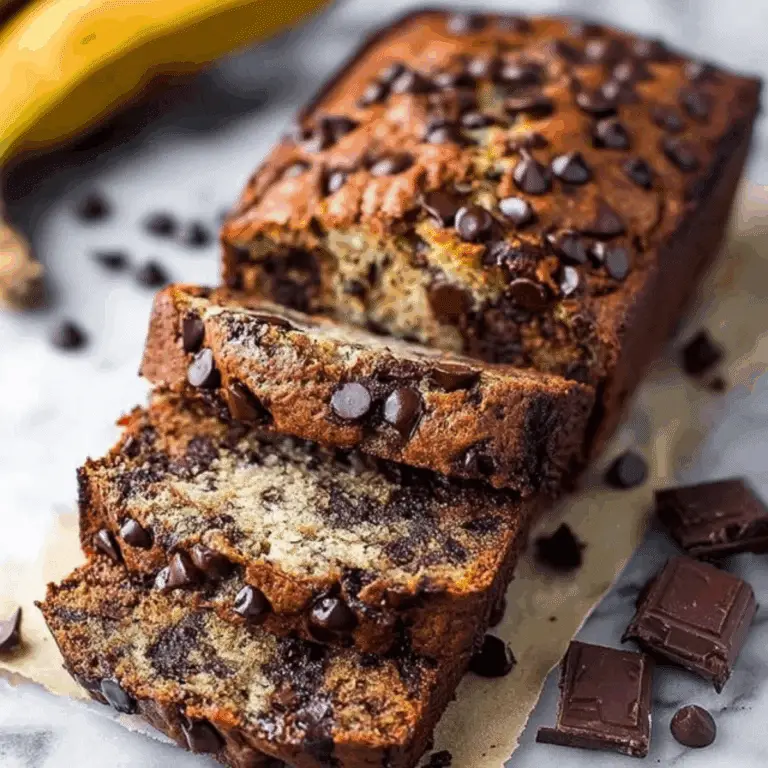Shokupan, also known as Japanese milk bread, is a soft, fluffy, and slightly sweet white bread that has become a beloved staple in Japanese households. Its incredible lightness and moist texture make it a perfect addition to any meal, from breakfast to lunch or even as a snack. This recipe guides you through the process of making Shokupan at home, using the Yudane method to achieve that melt-in-your-mouth softness.
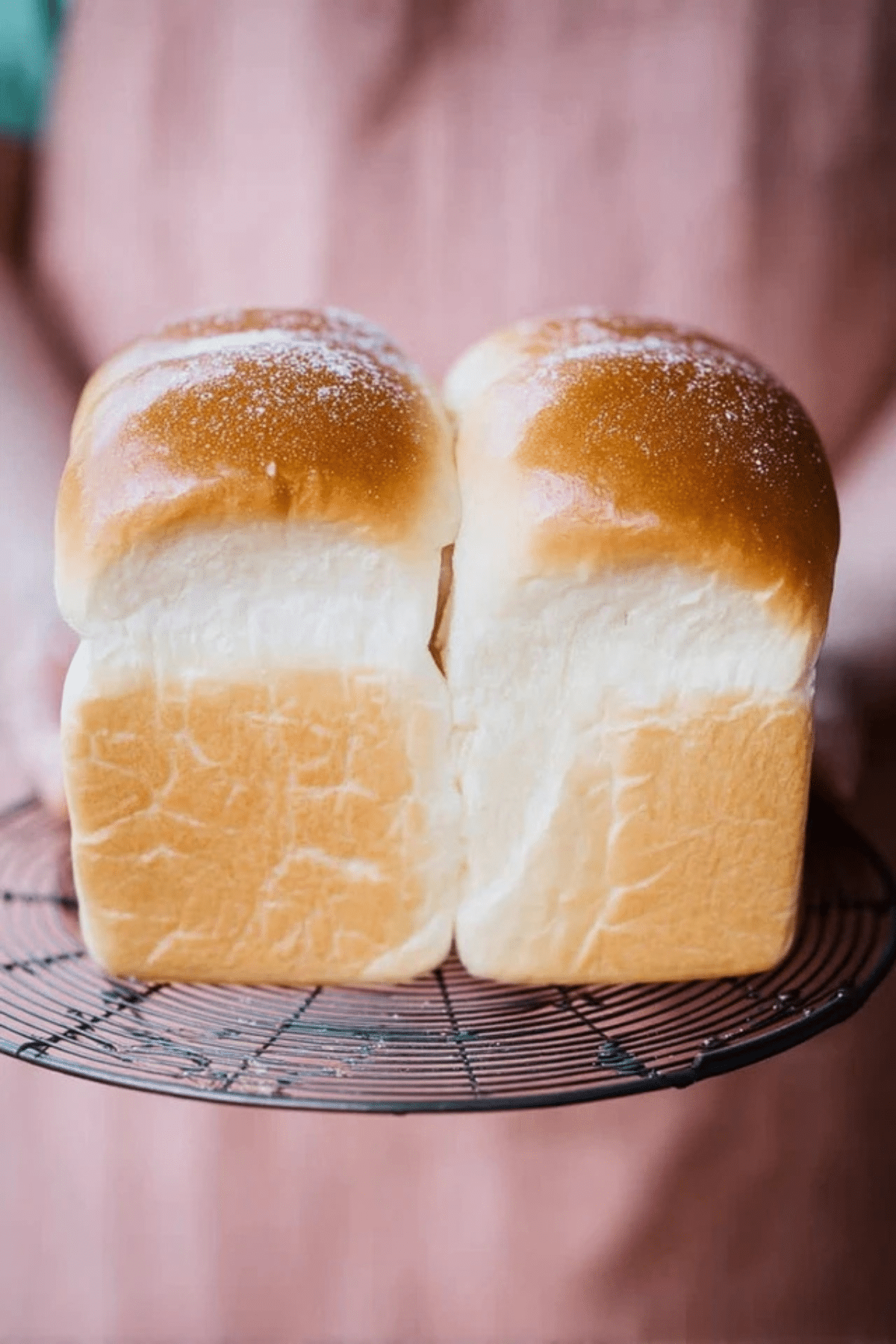
Table of Contents
Why Shokupan is the Perfect Bread
What sets Shokupan apart from other breads is its unique texture, thanks to the Yudane method. The Yudane process involves combining bread flour with boiling water, which gelatinizes the starch, locking in moisture and enhancing the bread’s sweetness. This results in a soft, fluffy texture that stays fresh for days. Shokupan is incredibly versatile; you can enjoy it on its own, use it for sandwiches, or even serve it with a bit of jam.
Ingredients
• Bread flour: Provides the structure and chewy texture needed for Shokupan.
• Milk: Adds richness and contributes to the softness of the bread.
• Sugar: Lightly sweetens the bread, giving it a slight dessert-like quality.
• Unsalted butter: Ensures the bread remains moist and adds a soft, tender crumb.
• Salt: Balances the sweetness and enhances the bread’s flavor.
• Instant yeast: Helps the dough rise and develop a light, airy texture.
• Yudane (prepared the night before): Gelatinized starch helps the bread remain soft for longer.
Alternative Ingredient Suggestions
If you’re looking to make Shokupan with specific dietary needs in mind, here are a few substitutions:
• Non-dairy milk: Almond or oat milk can easily replace whole milk for a dairy-free version without affecting the texture of the bread.
• Plant-based butter: Use vegan butter or oil as a substitute for unsalted butter for a completely dairy-free loaf.
• Whole wheat flour: Substitute a portion of the bread flour with whole wheat flour for a slightly denser, heartier version of Shokupan.
Step-by-Step Instructions
- Prepare Yudane: The night before baking, combine 50g of bread flour with 40ml of boiling water. Mix well, cover with plastic wrap, and refrigerate overnight.
- Combine ingredients: In a stand mixer bowl, add 150ml of room-temperature milk, 15g of sugar, and 10g of butter. Add the Yudane, tearing it into small pieces as you add it.
- Add dry ingredients: Sprinkle in 200g of bread flour, 3g of instant yeast, and 5g of salt. Mix everything on low speed using the kneading hook.
- Knead the dough: Once the ingredients come together, increase the speed to medium and knead for about 20 minutes, or until the dough is smooth and elastic.
- First rise: Shape the dough into a ball and place it in a greased bowl. Cover it and let it rise in a warm area for 45-60 minutes, or until doubled in size.
- Shape the dough: Punch down the dough, divide it into two equal pieces, and roll them into tight logs. Let them rest for 20 minutes.
- Second rise: Roll each piece of dough into a rectangle, fold the edges in, then roll it up tightly. Place the dough in a greased loaf tin and cover with a damp cloth. Let it rise for another 30 minutes.
- Bake: Preheat the oven to 365°F (185°C) and bake for 25-30 minutes, or until the bread is golden brown on top. Remove from the tin and allow it to cool on a wire rack.
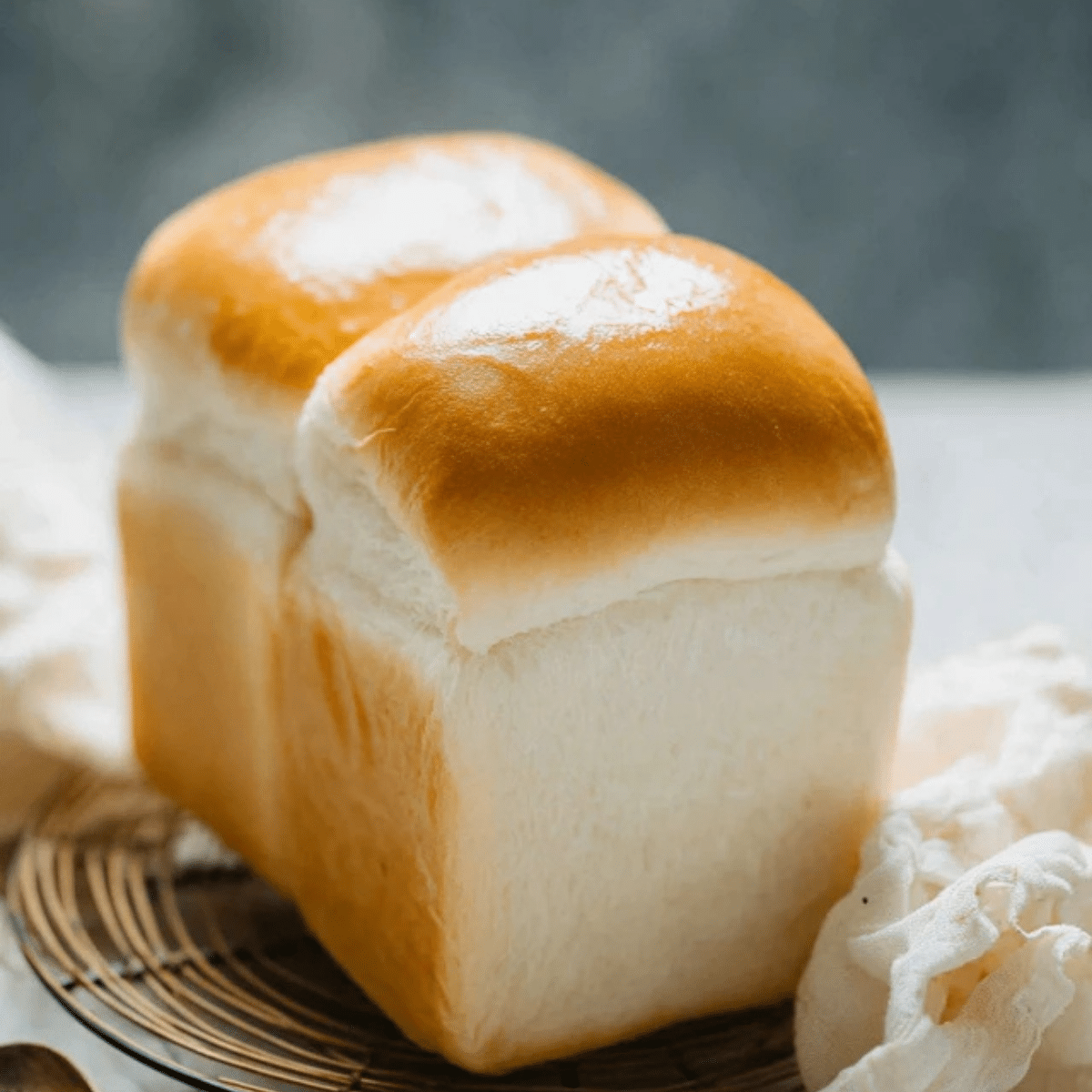
Tips & Tricks
• Perfect Dough Temperature: Ensure your Yudane is about 122°F (50°C) when you combine it with the rest of the ingredients. This will help maintain the soft texture of the bread.
• Humidity Control: The dough should rise in a warm environment (around 86°F or 30°C). You can use a warm oven with a damp towel inside or a styrofoam box with cups of hot water to maintain humidity.
• Avoid Overworking the Dough: Knead the dough gently to avoid developing too much gluten, which can make the bread denser than desired.
• Slicing Tips: Let the Shokupan cool completely before slicing. The bread is delicate and may collapse if sliced while still warm.
Pairing Ideas and Variations
Shokupan is incredibly versatile and can be used in a variety of ways. Here are some pairing ideas:
• Sandwiches: Use Shokupan to make a traditional Japanese Tamago Sando (egg sandwich) or a refreshing fruit sando with whipped cream and fresh berries.
• Toast: Simply toast a slice and top with butter or jam for a quick and comforting breakfast.
• Japanese Bread Crumbs: Toast slices of Shokupan to make crispy panko, perfect for coating fried dishes like chicken katsu or tonkatsu.
Storage and Make-Ahead Tips
Shokupan is best enjoyed fresh, but it can stay moist for several days if stored properly. After cooling, store the bread in an airtight container at room temperature for up to 2 days. If you want to keep it for longer, slice the bread and freeze the slices in a ziplock bag. It will last for up to a month in the freezer.
Why You Should Make Shokupan
If you’re craving a light, fluffy bread that stays moist for days, Shokupan is the answer. The Yudane method not only makes the bread super soft but also helps retain moisture, which is key for longer-lasting freshness. Whether you’re new to baking or an experienced home cook, this recipe is easy to follow and results in a loaf of bread that’s as close as you can get to what you’d find in Japan. Give it a try and enjoy the irresistible softness of homemade Shokupan!
Conclusion
Shokupan, the Japanese milk bread, is a delightful bread that can elevate any meal with its soft, fluffy texture and slightly sweet flavor. With the Yudane method, you can create a loaf that rivals the best bakery offerings, and it’s surprisingly easy to make at home. Whether you use it for sandwiches, toast, or just enjoy it plain, Shokupan is a versatile bread that will quickly become a favorite in your kitchen. Don’t be intimidated by the process—just follow the steps, and you’ll soon be rewarded with a golden-brown loaf that’s perfect in every way. Happy baking!
FAQ
1. Can I make Shokupan without a stand mixer?
Yes, you can! While a stand mixer makes the process easier, you can knead the dough by hand. It will take a bit longer, but with some patience, you’ll still get the same fluffy results. Just make sure to knead the dough for about 20 minutes until it’s smooth and elastic.
2. Can I substitute all-purpose flour for bread flour?
Using all-purpose flour instead of bread flour may result in a slightly denser loaf, as bread flour has a higher protein content which contributes to the fluffy texture. However, if all-purpose flour is what you have, you can still make Shokupan, but the texture may not be as light and airy.
3. How do I store Shokupan for maximum freshness?
To keep your Shokupan fresh, store it in an airtight container at room temperature for up to two days. For longer storage, slice the bread and freeze the slices in a ziplock bag. This will allow you to enjoy freshly-baked Shokupan any time, even weeks later.
More Relevant Recipes
- Pumpkin Spice Sourdough Bread: A Cozy Fall Baking Essential
- Pumpkin Sourdough Bagels with Pumpkin Spice Cream Cheese
- Texas Roadhouse Rolls Copycat Recipe: Fluffy, Buttery Perfection at Home
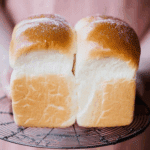
Shokupan
- Total Time: 2 hours 30 minutes
- Yield: 1 loaf 1x
- Diet: Vegetarian
Description
Shokupan, or Japanese milk bread, is an incredibly soft and fluffy white bread made using the Yudane method. Its moist texture and slightly sweet flavor make it perfect for sandwiches, toast, or enjoying plain. This homemade version of Shokupan will transport you straight to Japan with its light, airy crumb and golden crust.
Ingredients
- 50g bread flour (for Yudane)
- 40ml boiling water
- 150ml milk (room temperature)
- 15g sugar
- 3g instant dry yeast
- 10g unsalted butter (room temperature)
- 200g bread flour
- 5g salt
Instructions
- Make Yudane the night before. Mix 50g of bread flour with 40ml boiling water, then cover and refrigerate overnight.
- In a stand mixer bowl, add 150ml milk, 15g sugar, 10g butter, and the prepared Yudane, tearing it into small pieces as you add it.
- Mix in 200g bread flour, 3g instant yeast, and 5g salt. Knead on low speed for a few minutes until combined.
- Increase the speed to medium and knead for about 20 minutes until the dough is smooth and elastic.
- Shape the dough into a ball and place it in a greased bowl. Cover and let it rise for 45-60 minutes or until doubled in size.
- Punch down the dough, divide it into two equal pieces, and roll them into tight logs. Let the dough rest for 20 minutes.
- Roll each piece of dough into a rectangle, fold in the edges, then roll it up tightly. Place the dough in a greased loaf tin and cover with a damp cloth. Let it rise for 30 minutes.
- Preheat the oven to 365°F (185°C). When the dough has risen to the level of the tin, bake for 25-30 minutes or until golden brown.
- Remove from the oven, cool in the tin for 10 minutes, then transfer to a wire rack to cool completely.
Notes
- Make sure the Yudane is around 122°F (50°C) when you add it to the dough mixture for the best texture.
- For a dairy-free version, use plant-based milk and non-dairy butter.
- If you don’t have a stand mixer, knead the dough by hand for about 20 minutes.
- Allow the bread to cool completely before slicing for the best texture.
- Prep Time: 2 hours
- Cook Time: 30 minutes
- Category: Bread
- Method: Baking
- Cuisine: Japanese
Nutrition
- Serving Size: 1 slice (approx. 2cm thick)
- Calories: 150
- Sugar: 6g
- Sodium: 2396mg
- Fat: 5g
- Saturated Fat: 2g
- Unsaturated Fat: 3g
- Trans Fat: 0g
- Carbohydrates: 27g
- Fiber: 1g
- Protein: 4g
- Cholesterol: 8mg

